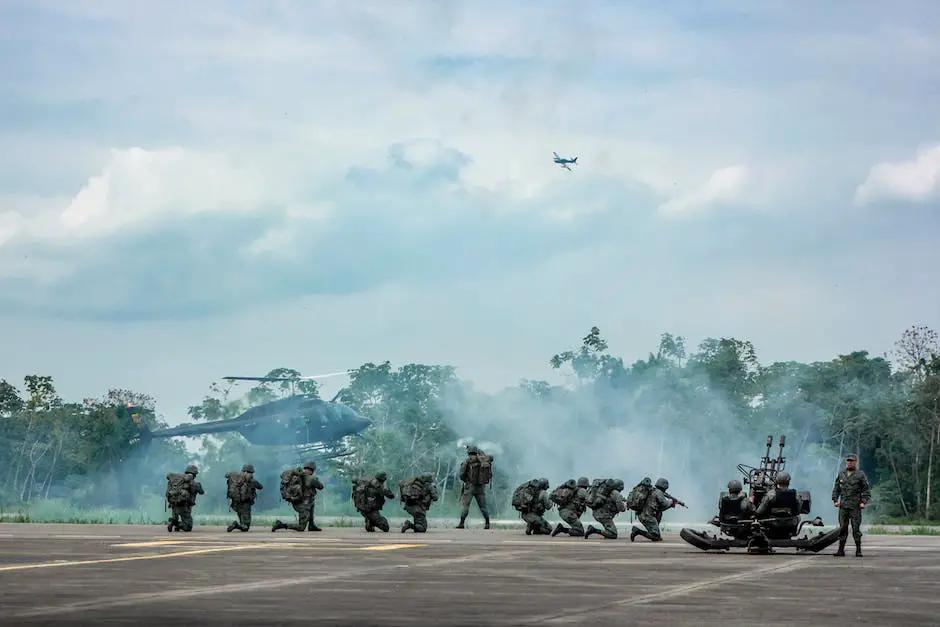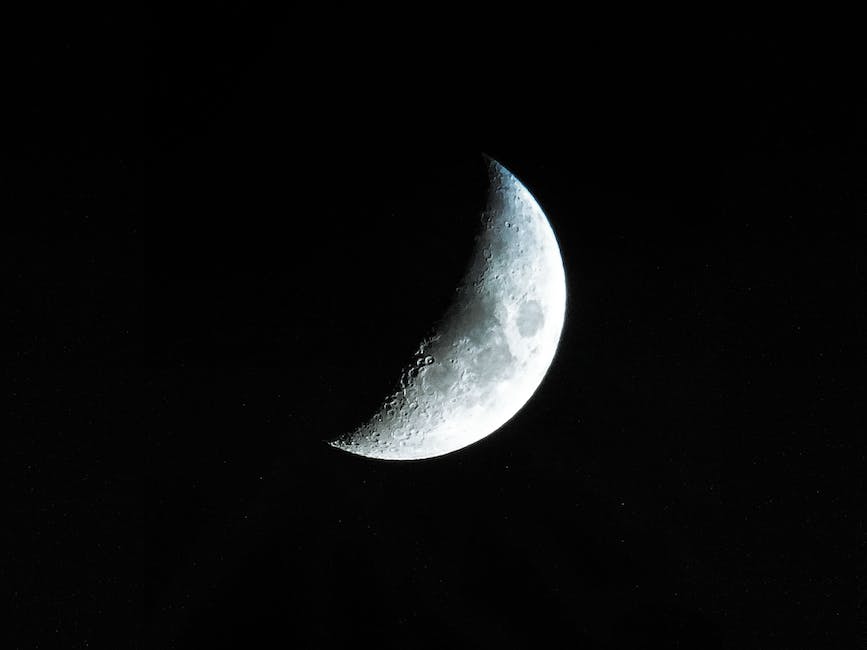In the annals of human endeavor, few incidents are as awe-inspiring as the Apollo missions during Preparations for Apollo Missions – a venture that dared not only to touch the stars but also to redefine our place in the universe.
Amid the competitive atmosphere of the Cold War, the United States embarked on an audacious mission to land a man on the moon, fueled by a potent blend of political ambition, scientific curiosity, and the human spirit for exploration.
This journey, however, required a prerequisite of immense magnitude – selecting the right individuals through a rigorous process and designing an unprecedented training regime to turn esteemed Air Force pilots into the first lunar explorers.
As we delve into this historic chapter, we get to appreciate how the intricate elements of political context, astronaut selection, rigorous testing, and mission-specific preparations came together to choreograph mankind’s first steps on an alien world.
Contents
Origins as a Response to the Cold War
The Cold War Influence on the Apollo Missions
The Apollo program, best remembered for landing men on the moon, was a product of its time, deeply rooted in the political and historic context of the Cold War. The tensions between the Soviet Union and the United States resulted in a fierce competition for technological supremacy that manifested in the Space Race.
The Soviet Union launched Sputnik, the world’s first artificial satellite, in 1957, instigating a sense of both awe and fear in Americans. This shock was amplified in 1961 when Yuri Gagarin became the first human to orbit the Earth, marking a huge victory for Communist Russia in the Space Race. The escalating competition pushed the U.S. to regain its global technological leadership, birthing the NASA Apollo missions.
Training and Preparation for Apollo Missions
The unprecedented nature of the Apollo program necessitated rigorous and comprehensive training to equip astronauts for the extraordinary physical and mental challenges of space. Each element of the training was strategically designed to simulate the conditions and emergencies the astronauts would potentially encounter while on their missions.
One of the most crucial aspects of this training involved preparing for lunar surface operations. To this end, Apollo astronauts participated in geological field trips to areas here on Earth that resembled lunar landscapes, bolstering their ability to identify and collect valuable lunar specimens during their moonwalks.
Training for potential emergencies was another unique facet of the Apollo program. Full-scale models of the spacecraft were used to conduct simulations, ensuring astronauts were versed in dealing with any possible crisis scenario, from system malfunctions to issues during launch, reentry, or splashdown.
The physical preparation was just as demanding, with high-G-force training to acclimatize astronauts to the extreme gravitational forces experienced during liftoff and reentry. In addition, survival training readied them for potential emergencies during splashdown, which could occur practically anywhere in the world, across a broad spectrum of unpredictable and often harsh environments.
Astronauts also needed to master the cutting-edge equipment they would be operating in space. Extraordinary attention to detail was given to familiarizing them with the spacecraft systems, procedures for stepping onto the lunar surface, and protocols for docking the lunar module.
With each detail meticulously planned and executed across years of preparation, the training for the Apollo missions was intricate and demanding. Rooted in a Cold War landscape, these preparations ultimately resulted in pioneering advancements that forever changed the face of space exploration.

Selection & Training of Apollo Astronauts
Selection and Training of Apollo Astronauts
Images of astronauts imprinting the first human footprints on the moon often spring to mind when contemplating space exploration and the Apollo missions. But to even qualify for these historic endeavors, astronauts first had to navigate the hurdles of a stringent selection process and complete comprehensive training.
The Selection Process
Potential Apollo astronauts were initially selected from a pool of military test pilots, and later civilian scientists and engineers were also included. To even be considered for selection, a candidate had to meet several criteria. Firstly, they had to be less than 40 years old and have a height of no more than 5 feet 11 inches due to the compact nature of the Apollo spacecraft.
Physical health was another big factor in the selection process. The candidates underwent thorough medical examinations to ensure that their bodies could stand up to the rigors of space travel. This included cardio-respiratory tests, psychiatric evaluations, and neurological assessments to ensure both physical and mental soundness.
Once the medical tests were passed, the next part of selection focused on skills and experience. Most of the astronauts selected had backgrounds in engineering or the natural sciences, as they would be conducting experiments and troubleshooting technical problems while in space. They also had to demonstrate exceptional flying skills, leadership abilities, and a level-headed temperament during high-stress situations.
The Rigorous Training Program
Upon selection, astronauts were subjected to an extensive training program to prepare for their impending missions. Lasting as long as two years, this program strived to reflect as accurately as possible the conditions anticipated on their lunar journey.
Added to the training regimen were academic studies, physical conditioning, and simulations of diverse mission situations. The academic training involved areas such as navigation principles, geology studies, and engineering. On the other hand, physical training was targeted at preparing the astronauts for space conditions, such as experiencing weightlessness and withstanding high gravitational forces during liftoff and re-entry.
Of the training elements, simulation training was possibly the most critical. The astronauts underwent practice drills for lunar landings in a vehicle replicating the gravity on the moon. They also familiarized themselves with the Lunar Module simulator for practicing pilotage, navigation, and Module Command docking, along with extravehicular activity procedures (or spacewalks).
A survival training component was also integrated into the program to get the astronauts ready for potential landing mishaps upon return. This comprised learning fundamental survival skills for varying surroundings, namely, desert, jungle, or ocean environments.
In summary, the Apollo astronauts underwent a challenging process of selection and preparation. This mix of stringent selection and comprehensive training ensured that the astronauts, when their time to land on the moon came, were equipped to handle all situations.

Degrees in Simulation & Testing
Emphasis on Simulation & Testing: The Apollo Training Regime
NASA’s Apollo Mission required an unprecedented level of preparedness to guarantee flawlessly executed moon landings. This preparation encompassed a comprehensive suite of simulation and testing stages. These were developed to familiarize astronauts and mission control teams with all eventualities they might face during their extraterrestrial journey.
Complexity and Variety in Training Modules
The training modules for Apollo missions consisted of an intricate blend of theoretical learning and practical simulation testing. NASA not only aimed to equip astronauts with the necessary scientific knowledge, but also with the ability to troubleshoot any potential technical problems that might arise in the harsh environment of space.
Theoretical training covered a wide range of subjects such as navigation, guidance and control, spacecraft systems, flight planning, geology, and survival training.
Practical training, on the other hand, involved simulated space vehicle operations, exercises in weightlessness, isolation tests, centrifuge tests for exposure to high gravity, mission simulations, plus water and wilderness survival training in case of off-target landings.
The Necessity of the Simulations
In the realm of space exploration during the era of Apollo, the margin for error was extremely small. Essentially, every minor hitch could result in a catastrophic failure, making the demanding and thorough simulations not a luxury but an absolute necessity.
One of the most valuable aspects of these training simulations was their role in improving the relationship and communication between astronauts and mission control. Each simulation provided an immersive, realistic experience that allowed both teams to understand and react to various challenges, fostering a strong, synergistic bond.
The Apollo Mission Simulators
NASA developed two types of mission simulators to emulate the Apollo spacecraft. The first was the Command Module Simulator (CMS), designed to replicate the command and service module, where astronauts spent the majority of their time during the mission. The second was the Lunar Module Simulator (LMS), created to mimic the lunar module that would land on the moon’s surface.
These simulators allowed astronauts to rehearse every stage of the mission, from launch to moon landing, and finally, earth re-entry.
Testing: Preparing for Every Possible Scenario
Along with training simulations, rigorous testing was a key element to prepare the crew and the spacecraft for every conceivable condition. This involved a series of pre-flight tests pertaining to the command module, lunar module, and launch vehicle systems.
Ground tests were conducted to ensure the performance and compatibility of all spacecraft systems, whereas flight tests were executed to prove the functionality and reliability of the spacecraft and launch vehicle in flight-like conditions.
Final Thoughts
The Apollo missions marked an extraordinary era of human achievement and technological innovation. The comprehensive and thorough simulations and test procedures used were not only integral to the success of these missions but also pushed the boundaries of our knowledge about space travel and exploration. Without a doubt, these thorough preparation efforts greatly contributed to the historical moment of landing a man on the moon.

Mission-Specific Preparations
Detailed Preparations Associated with Apollo Missions
The Apollo missions, some of the most impressive milestones in human exploration, achieved the incredible feat of landing humans on the moon. Beyond the monumental achievement, however, were years of painstaking and precise mission-specific training and preparation, which often go overlooked yet remain an essential part of the story.
Developing Skills for Moonwalks
One of the foremost requirements for Apollo astronauts was the ability to perform moonwalks. Training for this began early, although to prepare for the distinctive conditions on the moon was no small feat. NASA developed several moon-like environments, complete with lunar landers, for astronauts to practice their moves.
Intricate spacesuits designed to protect from lunar conditions, while also offering the flexibility to walk and handle tools, were part of the training regimen. Astronauts underwent rigorous physical training to withstand the moon’s low gravity. Simulators were deployed to mimic the moon’s terrain and gravity, and astronauts trained extensively in these scenarios, learning to adapt to the low gravity conditions.
Collection of Lunar Samples
The collection of moon rock samples played an integral part in the Apollo missions. Not just for scientific research, these samples also helped understand the moon’s geological history. However, collecting them was a complicated process.
The astronauts were given field geology training to identify valuable samples. Additionally, they were trained in handling specific lunar tools. The iconic Apollo Lunar Sample Return Container, or “rock box,” was a unique vacuum-sealed case developed to protect lunar samples from contamination on the way back to Earth. Training for the precise handling of ‘rock box’, collect samples and properly seal it were an essential part of astronaut’s regimen.
Conducting Experiments in Lunar Environment
Conducting experiments on the moon was another significant factor in the Apollo missions. Astronauts needed to understand how to set up and use specific experimental apparatus under the constraints of their spacesuits and the lunar environment.
They were trained on Earth with the actual devices they would later deploy on the moon. This included the Apollo Lunar Surface Experiments Package (ALSEP), a suite of scientific instruments placed by astronauts at the landing sites.
From seismometers to measure ‘moonquakes’ to precise retro-reflectors for laser ranging experiments from Earth, astronauts had to understand the specifics of these instruments, deploy them accurately and troubleshoot any potential issues.
Conclusion
The triumph of the Apollo missions is a reflection of thorough, mission-centric training that the astronauts and supporting personnel at NASA underwent. This rigorous preparation ensured tasks such as moonwalks, sample collections, and conducting lunar experiments were efficiently executed by the astronauts in the moon’s alien dominion, thereby guaranteeing their safety and facilitating the realization of scientific objectives.

Concluding Efforts: Quarantine and Debriefing
Following a Successful Mission: Quarantine Protocol and Measures
Rigorous procedures extended beyond their time on the Moon; NASA implemented stringent quarantine measures in both the interest of the returning astronauts’ health and to protect Earth from any potential extraterrestrial biological cross-contamination.
Upon experiencing splashdown on Earth, a recovery helicopter was immediately sent to the returning spacecraft’s location. Before anything else, a flotation collar was secured around the craft to prevent sinking. Then, astronauts were provided with Biological Isolation Garments (BIGs), designed to prevent potential lunar dust or organisms from affecting Earth while astronauts were transferred to the Mobile Quarantine Facility (MQF).
The MQF, essentially a transformed Airstream trailer, boasted a decontamination area and living quarters suitable for half a dozen people. On entering the MQF, an 88-hour quarantine period ensued for the astronauts, starting from splashdown and concluding upon their arrival at the Manned Spacecraft Center (current Johnson Space Center) in Houston, Texas. Here, an extended quarantine phase commencing that lasted for 21 days was followed.
During their quarantine, the astronauts’ health was closely observed for any illnesses that might imply potential exposure to lunar pathogens. Further measures were taken to avoid contamination; equipment and even wastewater disposed of from the Lunar Receiving Laboratory (LRL) were sterilized before being released.
Apollo Mission Debriefing: A Vital Part of the Process
The comprehensive debriefing process post-mission was as critical as any aspect of the Apollo training. Due to the pioneering nature of their task, the astronauts’ first-hand experiences and observations were invaluable in understanding the lunar environment better and planning future missions.
During the debriefing processes, the astronauts underwent medical examinations, technical debriefings, and extensive interviews about their experiences. These debriefings could take several days and were attended by mission control staff, scientists, engineers, and future astronaut crews.
Apart from this, astronauts also participated in public debriefings, often in the form of press conferences or speeches. They shared their experiences, discussed the scientific findings, and shared the societal impact of lunar exploration. These press activities helped to convey the importance and outcomes of the missions to the public and policymakers, ensuring continued support and enthusiasm for space exploration.
In conclusion
The quarantine and debriefing procedures were paramount in the successful conclusion of the Apollo missions. They ensured the Earth’s protection from potential extraterrestrial biohazards while simultaneously optimizing the vast wealth of knowledge achieved through these groundbreaking voyages.

As we reflect on the grandeur of the Apollo missions, we realize that they were more than just about achieving technological supremacy or providing a spectacular high point during the US-Soviet Space Race. They were about pushing the boundaries of what was humanly possible, about the quest to answer fundamental questions about our place in the universe.
The iconic images of astronauts on the moon, the lunar samples brought back, and the comprehensive debriefings post-mission, all were part of an admirable effort to decipher and communicate the mysteries of the cosmos.
The quarantine measures demonstrated our first responsible steps to avoid potential extraterrestrial biological contamination. The Apollo missions stand as a testament not just to mankind’s indomitable spirit of exploration, but also to our capacity for meticulous preparation, stringent training, and thoughtful precautions.

With a passion for unraveling the mysteries of the moon, Dr. Luna Sterling is a highly-respected astrophysicist, a dedicated lunar enthusiast, and a captivating blogger. After earning her Ph.D. in Astrophysics from the Massachusetts Institute of Technology (MIT), she served as a lead scientist and mission planner for NASA, contributing significantly to various lunar missions.
For over two decades, Luna has been at the forefront of lunar science, pushing boundaries and pioneering discoveries that have enriched our understanding of the moon’s geological history. However, it’s her infectious enthusiasm for all things lunar that truly sets her apart.
In an endeavor to bring the moon closer to everyone, Luna started her blog, “Luna’s Lens: A Closer Look at the Moon.” With this platform, she offers a unique blend of intriguing moon facts, updates on lunar missions, and personal anecdotes from her experiences in the field, all told in an engaging and accessible manner.
Luna’s unique blend of scientific expertise and warm, humorous writing style has transformed complex astrophysics into compelling narratives that captivate her audience. As a gifted communicator, she leverages her knowledge and experience to relate scientific facts to everyday life, thus making her blog a must-read for both seasoned space enthusiasts and curious newcomers.
Interactive and inviting, Luna frequently encourages reader engagement through thought-provoking discussions and a monthly ‘Ask Dr. Luna’ feature, where she personally answers questions about the moon and space exploration. A celestial storyteller at heart, Dr. Luna Sterling’s passion for the moon is as vast as the cosmos she explores, making her an invaluable beacon in the world of lunar science.
